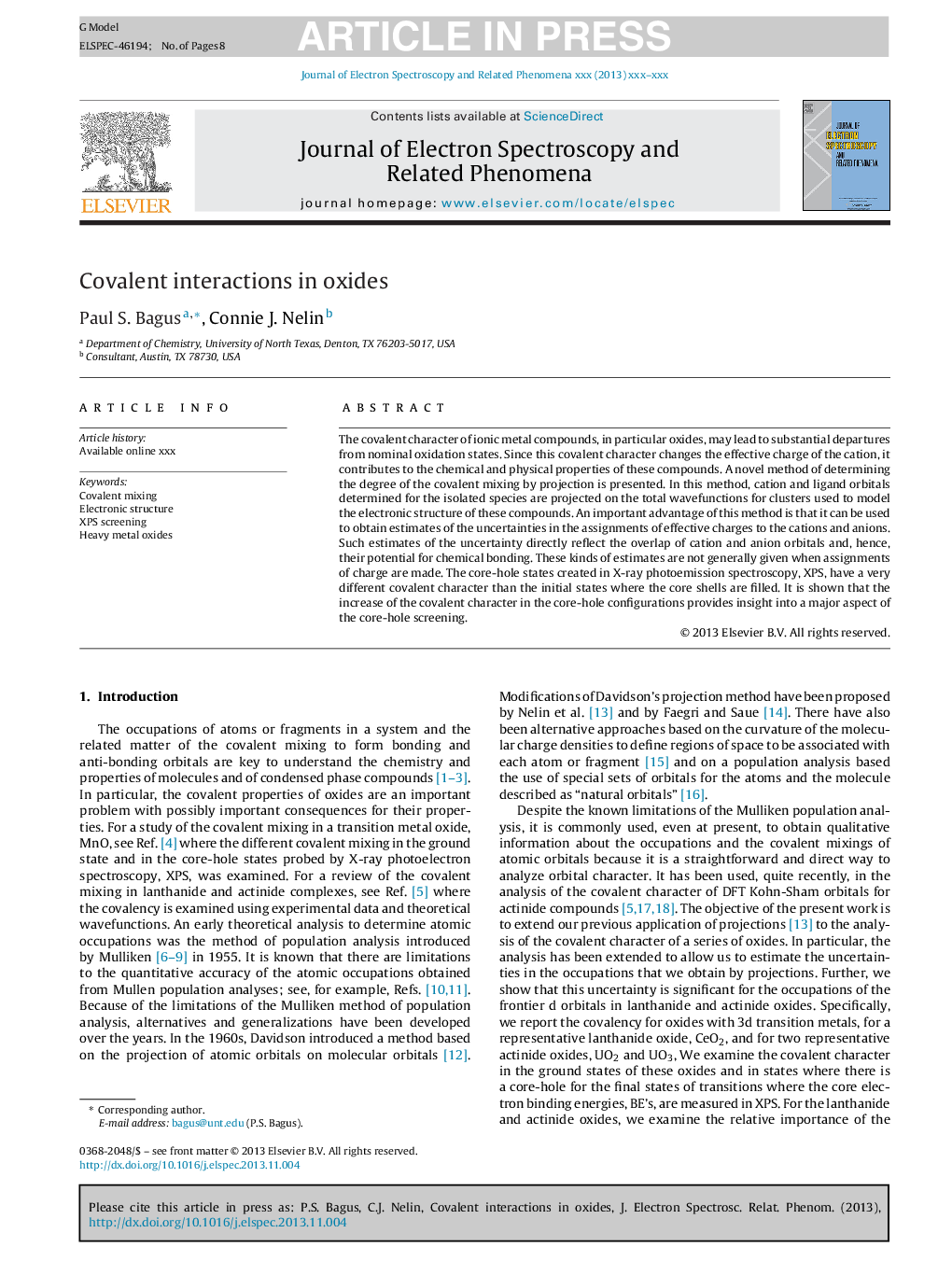| Article ID | Journal | Published Year | Pages | File Type |
|---|---|---|---|---|
| 5396026 | Journal of Electron Spectroscopy and Related Phenomena | 2014 | 8 Pages |
Abstract
The covalent character of ionic metal compounds, in particular oxides, may lead to substantial departures from nominal oxidation states. Since this covalent character changes the effective charge of the cation, it contributes to the chemical and physical properties of these compounds. A novel method of determining the degree of the covalent mixing by projection is presented. In this method, cation and ligand orbitals determined for the isolated species are projected on the total wavefunctions for clusters used to model the electronic structure of these compounds. An important advantage of this method is that it can be used to obtain estimates of the uncertainties in the assignments of effective charges to the cations and anions. Such estimates of the uncertainty directly reflect the overlap of cation and anion orbitals and, hence, their potential for chemical bonding. These kinds of estimates are not generally given when assignments of charge are made. The core-hole states created in X-ray photoemission spectroscopy, XPS, have a very different covalent character than the initial states where the core shells are filled. It is shown that the increase of the covalent character in the core-hole configurations provides insight into a major aspect of the core-hole screening.
Related Topics
Physical Sciences and Engineering
Chemistry
Physical and Theoretical Chemistry
Authors
Paul S. Bagus, Connie J. Nelin,
